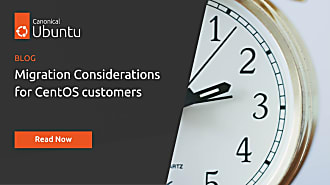Canonical
on 4 December 2012
Hidden away in the dark corner of every business there are monsters that scare the bejesus out of many an IT manager. They are little legacy applications, often unsupported by their creators, running on old spreadsheets, an ageing Access database or arcane Word macros.
Now, big legacy applications, the kind that big businesses rely on, are not as frightening. They are visible and have the attention of the IT department. But little legacy applications might only be needed by a department, or just a few people, for a purpose too obscure to attract serious development money. They may be patched on the side, by an IT department with too little influence to force users to move away from their familiar way of getting information, no matter how clunky or awkward they seem to any rational human.
Yet they remain scary because they can be a drag on any effort to move infrastructure forward and create a standardised environment. If there are many of them, they can soak up valuable developer time with little benefit to the business.
On 26 October, Microsoft released Windows 8. The release marks an occasion when IT departments will once again consider their future with the Redmond software giant. A radical departure in user interface design, complex licensing issues and additional hardware upgrades may all discourage businesses from blindly moving to another edition of the omnipresent operating system. But a niggling feeling about what might happen to those little legacy applications could tip the scales in favour of staying with what they know.
The truth is, when supporting older applications, it makes little difference whether IT departments stick with Windows or an alternative OS. One day they will have to face their demons and retire these troublesome applications or migrate them to another platform. If it’s one supported by Microsoft then that might be some help, but they would still need to pay for it.
Alternatives to Microsoft are growing stronger by the day. Ubuntu is being run on millions of desktops worldwide and supports thousands of applications.
The latest edition allows tight integration of web services with the desktop. This is handy for integrating web applications such as Gmail into the operating system, so that the user can get alerts and search mail with having to go to a browser and open another tab.
It will also come in handy for those obscure legacy applications. By getting them all together and hosting in a cloud environment, they can be published as web services, which can appear as icons on the user’s desktop. Users may not even know they are accessing the application remotely.
Other options are available for migrating legacy Windows applications application to a Linux environment. Several million people already use Wine, a freely available compatibility layer that allows legacy applications to run on Linux, including Ubuntu. Its developers argue it is no different from introducing an additional software library to allow newer versions of Windows to run old applications.
While everyone in IT would like a completely standardise and order software inventory, life is just not like that. Some business users will always be running ageing software that the IT professionals would rather not support. But that does not prohibit them from benefiting from a full range of options when it comes to an operating system upgrades. Linux systems can support old business apps just as well as new versions of Windows, and could even set CIOs free from licensing complexity and costly hardware upgrades.
Other links
How to easily install Windows software on Linux machines
Running a business on desktop Linux



